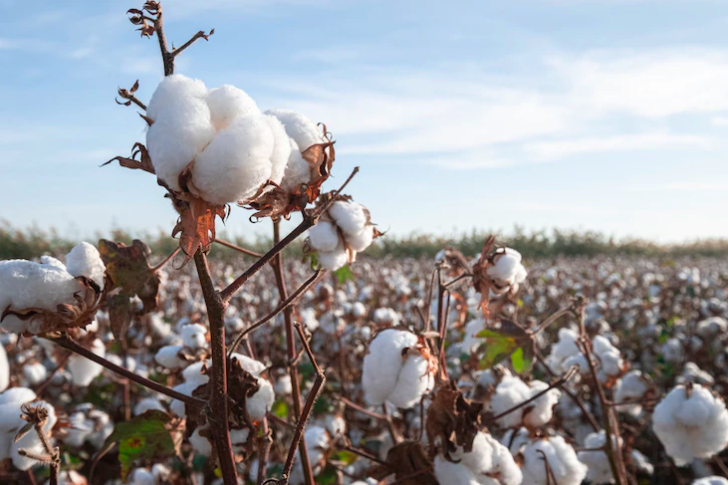Cotton, often referred to as the “white gold,” has been cultivated for centuries due to its versatility and economic value. Whether you’re a seasoned farmer or a novice enthusiast considering growing cotton, there are several essential aspects to understand before embarking on this agricultural endeavor. Here are ten things you should know before growing cotton.
- Climate and Soil Requirements: Cotton thrives in warm climates with temperatures between 60°F and 95°F (15°C to 35°C) and a frost-free growing season of at least 160 to 180 days. It requires well-drained soil with a pH level between 5.5 and 7.5. Soil texture should be loamy or sandy, as cotton plants struggle in heavy clay or waterlogged soil.
- Water Needs: Adequate water supply is crucial for cotton growth. The crop requires an average of 20 to 40 inches (50 to 100 cm) of water per season, with regular irrigation during dry periods. However, it is essential to avoid overwatering, as excessive moisture can lead to disease and pest problems.
- Pest and Disease Management: Cotton is susceptible to various pests and diseases, including boll weevils, aphids, bollworms, and fungal infections like Fusarium and Verticillium wilt. Implementing integrated pest management (IPM) practices, such as crop rotation, biological control, and judicious pesticide use, is essential to minimize damage and ensure a healthy crop.
- Crop Rotation: Crop rotation is vital for sustainable cotton farming. Avoid planting cotton in the same field year after year, as this practice increases the risk of pest and disease buildup. Rotating cotton with other crops, such as corn, soybeans, or legumes, helps break pest cycles and improves soil fertility.
- Seed Selection: Choosing the right cotton variety is crucial for a successful harvest. Consider factors like yield potential, fiber quality, disease resistance, and adaptability to your specific climate and soil conditions. Consult local agricultural extension services or reputable seed suppliers for guidance on suitable varieties for your region.
- Planting and Spacing: Cotton seeds should be planted when soil temperatures reach at least 60°F (15°C). The recommended spacing is typically 3 to 4 feet (0.9 to 1.2 meters) between rows and 6 to 12 inches (15 to 30 cm) between plants within a row, depending on the variety. Proper spacing allows adequate airflow and sunlight penetration, reducing disease incidence.
- Nutrient Management: Cotton requires essential nutrients for optimal growth and fiber development. Conduct soil tests to determine nutrient deficiencies and apply fertilizers accordingly. Nitrogen, phosphorus, and potassium are the primary macronutrients needed, while secondary macronutrients (calcium, magnesium, and sulfur) and micronutrients (zinc, iron, manganese, etc.) should also be considered.
- Weed Control: Weeds compete with cotton plants for resources and can significantly impact yields. Implement effective weed control measures, such as pre-emergence and post-emergence herbicides, hand-weeding, or mechanical cultivation. Timely weed management is crucial, as weeds can quickly outgrow cotton plants and reduce their productivity.
- Harvesting and Fiber Quality: Cotton bolls typically mature within 60 to 180 days after planting, depending on the variety and growing conditions. Harvesting should occur when the bolls are fully developed and the fibers are fluffy and white. Mechanical harvesters are commonly used, but hand-picking is also an option for smaller-scale operations. Proper handling and storage are essential to maintain fiber quality.
- Market Considerations: Before growing cotton, it’s important to research market demand and prices. Understand the global cotton market, including factors like supply and demand dynamics, price fluctuations, and potential buyers or cotton ginners in your area. Consider contracts or partnerships with textile companies to secure a market for your harvest.
Growing cotton can be a rewarding experience, but it requires careful planning, attention to detail, and knowledge of best practices. By considering these ten crucial factors before starting your cotton farm, you’ll be better equipped to navigate the challenges and maximize the success of your cotton crop.







